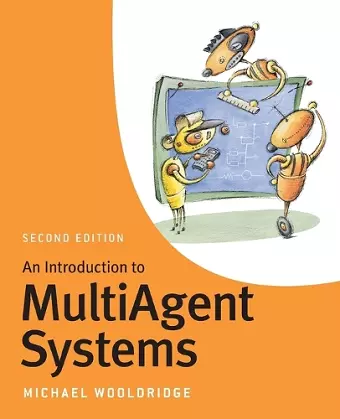An Introduction to MultiAgent Systems
Understanding the dynamics of intelligent agent interactions
Format:Paperback
Publisher:John Wiley & Sons Inc
Published:15th May '09
Should be back in stock very soon

This book serves as a comprehensive guide to multi-agent systems, detailing their design and applications. An Introduction to MultiAgent Systems is essential for students and professionals alike.
The updated resource, An Introduction to MultiAgent Systems, delves into the crucial field of multi-agent systems (MAS), where numerous intelligent agents interact with one another. This area has evolved rapidly since the first edition was released nearly a decade ago. The book provides foundational knowledge, assuming only a basic understanding of algorithms and discrete mathematics, which are typically covered in the early years of computer science education. While familiarity with artificial intelligence concepts can be beneficial, it is not a prerequisite for readers.
The main objectives of An Introduction to MultiAgent Systems include introducing students to the concept of agents and their applications, addressing key design issues for intelligent agents, and exploring the complexities of creating a multi-agent society. It emphasizes the various types of interactions that can occur within these systems, whether cooperative or competitive, and how these dynamics influence problem-solving capabilities.
By the end of the book, readers will gain a solid understanding of what constitutes an agent, the distinctions between agents and other software paradigms, and the essential characteristics of applications suited for agent-oriented software. Additionally, the text covers the critical challenges associated with developing intelligent, autonomous agents and the collaborative strategies necessary for effective multi-agent interactions. This resource is invaluable for those looking to grasp the fundamentals and applications of agent-based systems.
“Nevertheless, despite these minor issues, this book is highly recommended to all socio-economic agent-based modellers, beginners or otherwise. Wooldridge’s scope, rigor, and well-respected experience at the current coalface means there’s plenty in here of interest for old-timers, while beginners can skip some of the maths and more bleeding-edge theory and concentrate easily on the implementation without loosing much.” (Appl. Spatial Analysis, 2011)
ISBN: 9780470519462
Dimensions: 235mm x 190mm x 27mm
Weight: 885g
488 pages
2nd edition